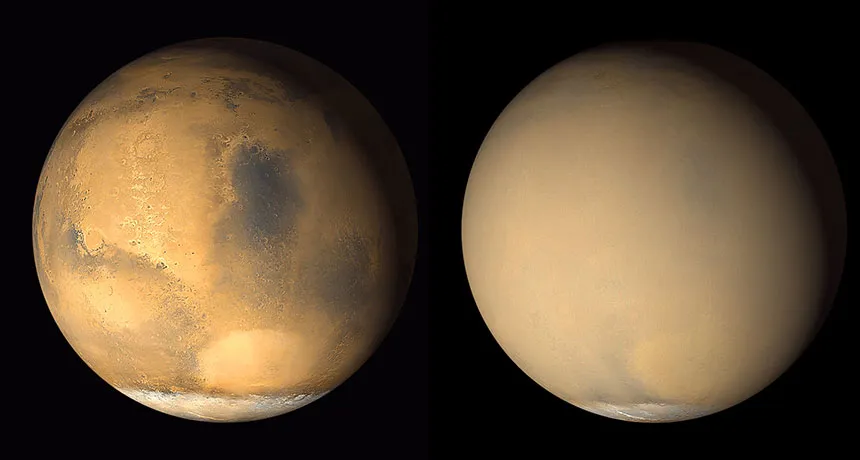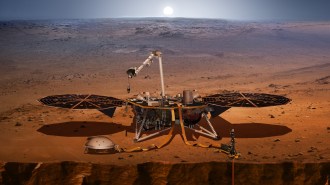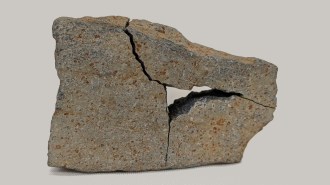Massive dust storms are robbing Mars of its water
Water vapor gets sucked up to high altitudes, allowing its hydrogen to escape into space

DUSTUP A dust storm (right) captured by the Mars Global Surveyor in 2001 swirls over much of the Red Planet. These storms are helping hydrogen from water vapor escape from the Red Planet, a new study finds.
MSSS/JPL-Caltech/NASA







